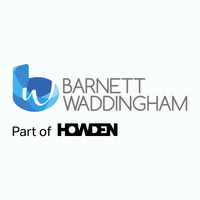How to use data to personalise benefits

Employers should consider whether shifting the focus of differentiation to benefits is a better way of standing out from their competitors, and thus improving their ability to attract and retain the best and brightest talent. This requires them to be innovative and creative in offering something different and more personalised, while also ensuring that the benefits are relevant and of value to employees.
A new approach
This is supported by a recent shift in thinking and approach, where some employers are starting to focus on the “employee experience” as the next evolution from employee engagement and job satisfaction. There has also been an increase in the number of job adverts for managerial employee experience roles.
This evolution is very similar to what has happened in customer relationship management, where user experience has risen in importance and relevance compared with pure loyalty and satisfaction. Many of the skills, techniques and campaigns employed by insight, marketing and branding specialists are equally applicable to the HR community in considering benefits review and design.
Customer insight teams have a distinct advantage in this space because of the amount of money invested by organisations in really understanding their customer base. They have access to a multitude of vital customer data and insight sources such as preferred channels, online browsing activity, purchasing activity, responses to specific offers and events, social media interaction, returns, complaints, mystery shopping and formalised customer feedback channels.
When this information is brought together it provides a rich picture about customers, their lives and what they like and dislike. This allows organisations to segment customers in really targeted and creative ways and execute really efficient, effective and profitable campaigns and services for customers.
In comparison, a fraction of the amount invested in customer metrics and insights is spent on employee metrics and insight. This is despite many organisations saying that they put their employees first or describing them as their “greatest asset”. This feels like a contradiction against a reality that most organisations know so much more about their customers than their employees. This is because they think about employees as employees rather than people with lives that blend across work and home with families, responsibilities, skills/talents, life experiences, interests etc.
As a result, the approach taken to benefits design is based around them being employees, with similar types of benefits provided based on what the employer believes they will want and value rather than being informed by relevant metrics and insights.
Offering a more personalised approach
Whilst this might all sound a bit depressing, and accepting that metrics and insight on employees may be limited in some organisations, what can employers do to offer a more personalised approach to benefits?
- Look at any existing HR metrics that help you to understand who uses/accesses each of the existing benefits offered. How well used are they? Which are the most popular ones? What types of benefits appear to be more relevant and used by certain types of people? Are there any benefits that are losing their relevance and appeal?
- Use feedback from employee surveys to understand where groups of employees may be struggling either inside or outside of work, and determine whether there are benefits available that can support them. As an example, there has been an increase in the provision of financial education support provided to employees struggling financially.
- Review any metrics and insight from exit surveys/interviews from ex-employees who left the organisation for benefits-related reasons to determine any core trends.
- Review Glassdoor for any reviewer postings or comments about the benefits offered by the organisation.
- Use Total Rewards Statements to help employees understand the range, cost and value of benefits they are using. Using the HR metrics and analysis outlined above, these statements could be used to highlight or suggest additional benefits that the employee could benefit from taking.
- Use the analysis of benefits against your HR metrics to ensure they appeal and are relevant to as wide a group of employees as possible, both now and with the future in mind. Quite often there can be a disproportionate difference between the cost of providing a benefit and the proportion of people eligible to receive it (eg long service awards).
- Solicit feedback from employees on how they perceive the benefits package offered and the relevance and value to them. Trade off analysis can be used to identify any benefits that groups of employees might want to trade off in exchange for other/new ones.
- Consider using limited period benefits open to specific groups at relevant points in their lives/careers (eg marriage, maternity, child starting school/university, home purchase/rental, career break, pre- retirement etc).
- Ensure that any benefits offered align with culture, employment strategy, proposition and policies of the organisation.
- Think and act creatively in a similar way to how customer marketing and branding teams think about the design, packaging and marketing of offers to customers.
Employee benefits are not keeping pace with the changes we are seeing inside and outside of the workplace, and this needs to change if organisations want to be seen as current and relevant.
This article was provided by Barnett Waddingham.
Supplied by REBA Associate Member, Barnett Waddingham
Barnett Waddingham is proud to be a leading independent UK professional services consultancy at the forefront of risk, pensions, investment, and insurance. We work to deliver on our promise to ensure the highest levels of trust, integrity and quality through our purpose and behaviours.







